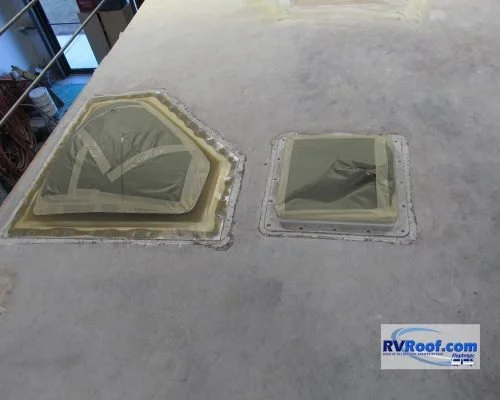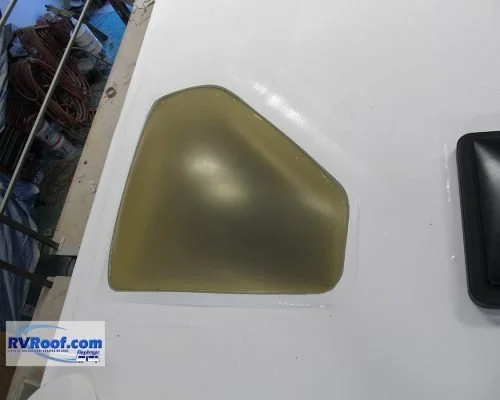Rv roofs Compared: Why FlexArmor is the last, roof You’ll ever need.
Most RV roofs are made of thin rubber sheets sealed with caulk — and fail within just a few years. FlexArmor is different. It’s a seamless, maintenance-free roof system backed by a nationwide transferable lifetime warranty.
Use the chart below to see why nothing else even comes close.
👉 Want to know what a FlexArmor roof would cost for your RV?
Get an Instant Quote Here — no pressure, no spam, just the info.
Trusted Nationwide by Thousands of RV Owners
-
🛡️“The FlexArmor roof has proven itself to be incredibly reliable…our days of worrying about our roof seals or leaks are long gone.”
—From a Truck Camper Magazine review after four years.
-
🔧 “Had mine done. Very happy with the product. Expect it’ll outlast me and the RV.”
— iRV2 Forum User
-
“This is my 2nd 5th wheel to have the FlexArmor roof. Absolutely satisfied so far.”
DL2221705, Grand Design RV Forum
👉 Want to know what a FlexArmor roof would cost for your RV?
Get an Instant Quote Here — no pressure, no spam, just the info.
When it comes to protecting your cherished recreational vehicle (RV) or trailer, the choice of roofing system is paramount. Among the various options available, the FlexArmor RV Roof System stands out as a premium choice for RV enthusiasts. To help you make an informed decision, we’ve created a comprehensive FlexArmor RV Roof System comparison chart that highlights its key features and benefits compared to other roofing solutions.
FlexArmor vs. Traditional RV Roofing
Durability
FlexArmor: Virtually indestructible, with a lifetime warranty.
Traditional: Prone to cracks, leaks, and degradation over time.
Waterproofing
FlexArmor: Seamless, monolithic design ensures 100% waterproofing.
Traditional: Requires seams and sealants that can deteriorate, leading to leaks.
Weight
FlexArmor: Lightweight, reducing stress on your RV’s structure.
Traditional: Heavier materials may impact fuel efficiency and handling.
Maintenance
FlexArmor: Virtually maintenance-free, saving time and money.
Traditional: Requires periodic inspections and resealing.
FlexArmor vs. Rubber Roofing
Longevity
FlexArmor: Lifetime warranty, no need for replacements.
Rubber Roofing: May require replacement every 3-10 years.
Strength
FlexArmor: Superior resistance to hail, UV rays, and punctures.
Rubber Roofing: Prone to damage from harsh weather and debris.
Installation
FlexArmor: Installed by certified technicians, ensuring quality.
Rubber Roofing: DIY installation may lead to improper sealing.
Seamless Design
FlexArmor: No seams or joints, reducing potential leak points.
Rubber Roofing: Vulnerable at seams, requiring ongoing maintenance.
FlexArmor vs. Fiberglass Roofing
Weight
FlexArmor: Lightweight and doesn’t add excessive weight.
Fiberglass Roofing: Adds significant weight to your RV.
Flexibility
FlexArmor: Adapts to your RV’s contours for a perfect fit.
Fiberglass Roofing: Less flexible, potentially leading to cracks.
Insulation
FlexArmor: Provides insulation for temperature control.
Fiberglass Roofing: Offers limited insulation properties.
Repairability
FlexArmor: Easy repairs with no visible patches.
Fiberglass Roofing: Repairs may be visible and compromise aesthetics.
The FlexArmor RV Roof System’s unparalleled durability, waterproofing, and low maintenance make it a superior choice when compared to traditional, rubber, or fiberglass roofing options. Investing in a FlexArmor roof ensures your RV’s long-lasting protection and peace of mind on your journeys. Make the smart choice for your RV—choose FlexArmor.
The FlexArmor Difference.
-

Not a liquid polymer coating that lets you down.
There are several aftermarket options available today. Many RV owners have replaced their roof with rolled on liquid polymer roof coatings, with some applying it themselves, and others paying a company to apply it onsite (“we come to you”) who include some form of a warranty. While many are happy with their results, we have encountered RVs where these coatings failed, and we’ve replaced them with FlexArmor.
-

Not a spray on liner that leads to failure.
Another less common option is companies that spray bed liner onto an RV roof. While similar in some ways to FlexArmor, this material and the processes of those applying it aren’t focused exclusively on RV roofs, leading to eventual failure.
-

Not an as-seen-on-TV trick.
We’ve seen a variety of attempts to use products from the hardware store or advertised on TV products that simply aren’t designed for RV roofs with disastrous results.






